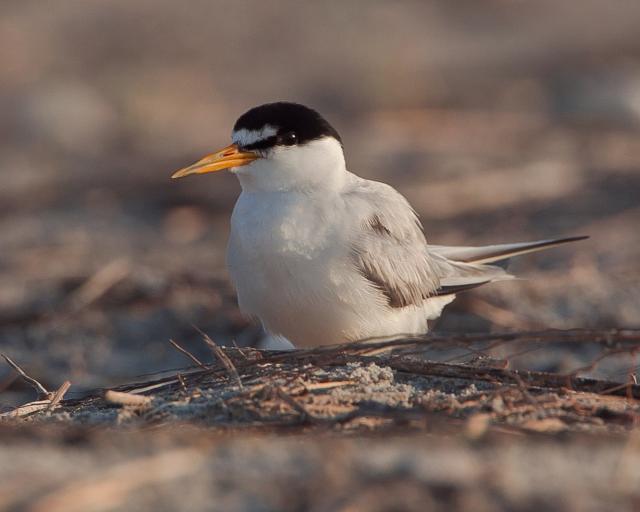In partnership with our chapters and network, Audubon North Carolina works to protect and advance state policies that promote bird conservation, habitat protection, and a responsible transition to clean energy.
Please welcome Greg Andeck, Senior Manager for Conservation Solutions. Greg manages Audubon North Carolina’s legislative agenda and outreach to state lawmakers, regulators and conservation partners.
The NC Coastal Resources Commission’s most recent Sea Level Rise report made clear that sea level rise is happening along North Carolina’s coast and “regardless of the rate of the rise, as mean sea level increases, North Carolinians should expect more frequent flooding of low-lying areas.”
Unfortunately, as more flooding and erosion occurs to public and private property along North Carolina’s coast, calls to harden our beaches by building costly and unsightly concrete or rock walls will continue to grow.
These actions threaten our most cherished coastal birds like the Least Tern, Black Skimmer, Piping Plover, American Oystercatcher and Red Knot by significantly altering coastal habitats that are critical sources of food and places to nest. These birds need tidal flats, sand spits and shoals to forage for food and build nests for their young.
The Issue of Terminal Groins
Rock walls or so-called “terminal groins” cut off the flow of sand to these natural areas, making them unsuitable for some of our most threatened species. As a result of development pressures up and down the North Carolina coast, few naturally occurring inlets remain that can support large numbers of birds.
Just north of Figure Eight Island, Audubon North Carolina has joined with a number of conservation groups to protect Rich Inlet - one of the last remaining natural inlets in the state. The inlet, designated by the U.S. Fish & Wildlife Service as critical winter and migration habitat for threatened Piping Plovers has extensive sandspits and shoals that offer prime bird habitat.
More than 800 pairs of Least Terns – the largest colony in North Carolina in more than 40 years - nested on the beach in 2014.

Threats to Critical Coastal Habitat
Rich Inlet is now being threatened by a proposal to build an 80-foot-wide rock wall, or terminal groin, at the north end of Figure Eight Island. The proposed hardened structure along this natural beach and inlet system threatens to destroy critical habitat for fish, birds and sea turtles. It would also eliminate treasured public trust areas used by thousands of people every year for fishing, boating, barbequing and swimming.
Due to their high cost, questionable effectiveness and impacts on wildlife, terminal groins were prohibited in North Carolina for 30 years. In 2011, the N.C. General Assembly passed a bill permitting a handful of “test” terminal groins to be built on state beaches, but required local taxpayer approval and financial guarantees against future maintenance costs.
John Hood of the John Locke Foundation has noted that “these jetties are typically on beaches for generations and can cost millions to build, maintain and repair after storms.”
Power of Citizen Engagement
In the rush to protect our coast from sea level rise, let’s keep taxpayer protections and limits on terminal groins and other hardened structures in place. These essential measures can ensure that we don’t destroy the wild and scenic attributes that make our coast so special in the first place.
During the 2016 Legislative Session, Audubon NC is working with lawmakers to prevent state dollars from being spent on expensive jetties, terminal groins and other hardened structures that limit public beach access and degrade critical coastal bird habitat.
Click here to learn more about coastal polices and Audubon NC’s agenda for the 2016 Legislative Session. To stay up to date on policy issues where your voice can make a difference for NC birds, sign up for Audubon’s Action Alert Network.








